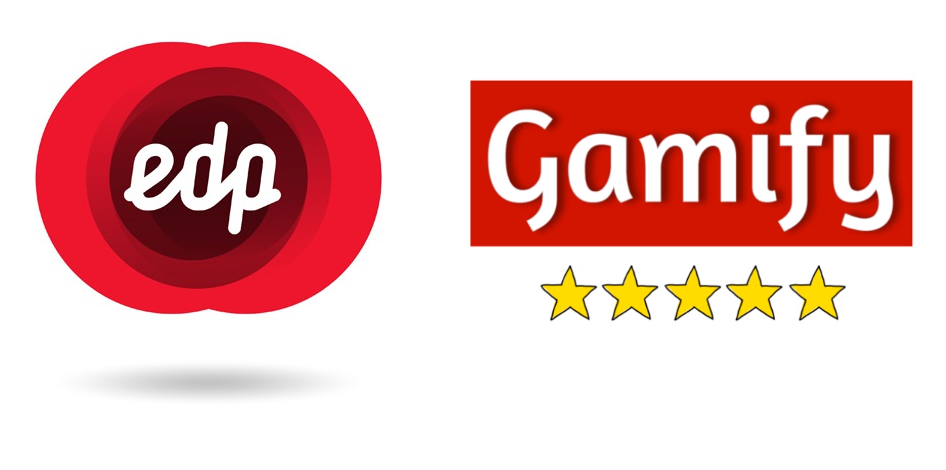This digital transformation project is the result of a collaboration between our team and EDP – Energias de Portugal, the largest energy operator on the Iberian Peninsula. The project focuses on Gamify, a gamification platform that will disrupt the current business process of the Stores Department of EDP. One of the authors of this project has been employed by this multinational for a substantial amount of time and noticed that frequently there was a misalignment between the stores employee’s incentives to perform and the company goals, which resulted in some friction. Because of this friction, the sales figures and the service provided to the client in general can be affected in a negative way. Therefore we came up with the idea to implement a gamification platform, which will provide a good incentive for EDP’s employees to sell and to deliver a better experience to customers.
We have studied multiple cases in which gamification has solved serious problems with respect to training, motivating and supporting employees. By knowing these solutions we were able to investigate this technology and the impact it would have on the Stores Department and its employees.
It turns out that the gap between this technology and the operational processes of the department is relatively easy to bridge. The main IT systems which already exist within the department can be compatible with Gamify and the employees, which are open for technological change, are familiar with these systems.
We have also gained a clear understanding of gamification and its changing environment. We are aware of the fact that there are still some issues regarding integration, costs and the variety of employee behavior, but we believe implementing this technology will have a positive influence on the Stores Department. It will truly change their way of doing business.
Interviews with the department have revealed that the department is open for the use of a gamification platform. Former (offline) gamification initiatives undertaken have proved that the methodology actually works for the Sales Department at many levels. However, a combination of factors such as lack of available resources (both human and financial) to allocate to the projects led to a state of inertia and the department never researched on the topic.
In order to guarantee that change actually takes place and that the project is initiated and delivered, some short-term recommendations should be followed:
- Compose a project team that includes sufficient IT knowledge. In order to successfully integrate the gamification platform and to make sure that it has all the relevant functionalities we recommend to include IT knowledge in the project team.
- Take advantage of the existing COTS Gamification platform. Even though there is the need to customize the platform, the main functionalities are in line with most industry standards.
- Guarantee full integration with CRM. Otherwise, the task of managing the platform will reveal impossible. For this purpose, a COTS Gamification platform is also the right choice, as the integration with the existing CRM is almost always covered by the software provided.
- Set up an implementation timeline. To reduce the overall risks, structure work and comply with deadlines, we recommend to construct an implementation timeline.
We also complemented our report with a video wherein the digital transformation is introduced at the company. You can watch the video below, or browse to: https://vimeo.com/187203136.
Group 53
Sources:
Kok, Y., Laura, O. L., Ven, G. v., & Silvis, S. (2016). Digital Transformation Project: A gamification platform for the Stores Department of Energias de Portugal”.



